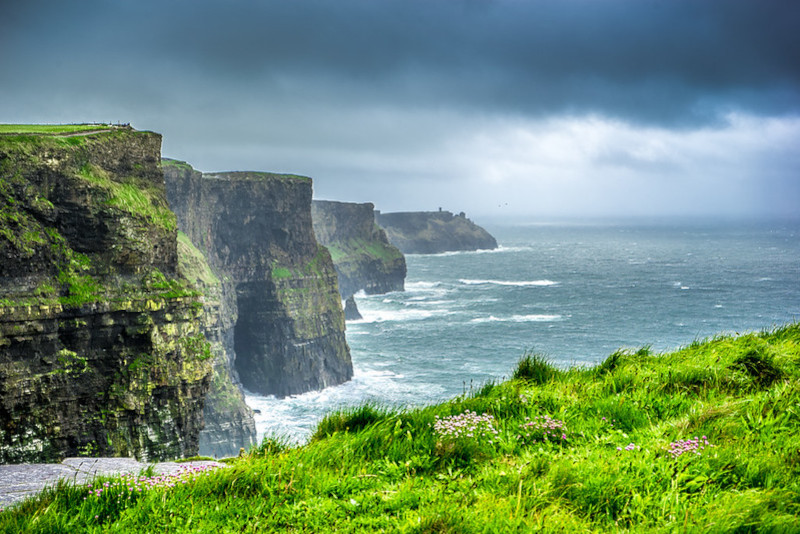
Cliffs of Moher Facts
- This magnificent creation of time and geological processesses is most frequently known by the english language name of Cliffs of Moher. It has other titles in other tongues, though. In the language of its region, it’s known as Aillte an Mhothair.
- Despite ongoing research, it’s not currently known exactly when ancient man first discovered this geological masterpiece, though. Many pieces of archaeological evidence, however, confirm human presence in its region as far back as 6,000 years.
- It’s highly probably, though, that our ancestors knew of the existence of this wonder of natural formation long before that. That’s because fossil records indicate that modern man first migrated to its general area between 48,000 – 43,000 years ago.
- The name, both in english and other tongues, derives from an old fort that once stood on the truly amazing structure. Named Mothar or Moher, it remained at the site until 1808. It’s unclear, however, at what point this fort was built by early inhabitants.
- Today, the fabulous Cliffs of Moher represent an extremely popular tourists destination within the country in which it lies. Thankfully, though, the feature is also part of a UNESCO Global Geopark. That status affords the site a degree of protection.
- It neveretheless still faces possible damage due to the depredations of man. The organization overseeing the management of the Geopark take great care to maintain it, however. Its splendor attracts over 1 million visitors per year on a regular basis.
Related Articles
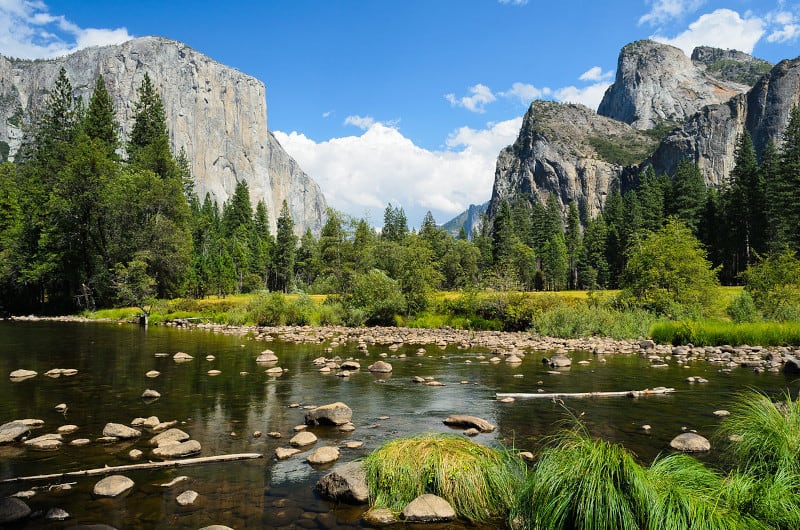

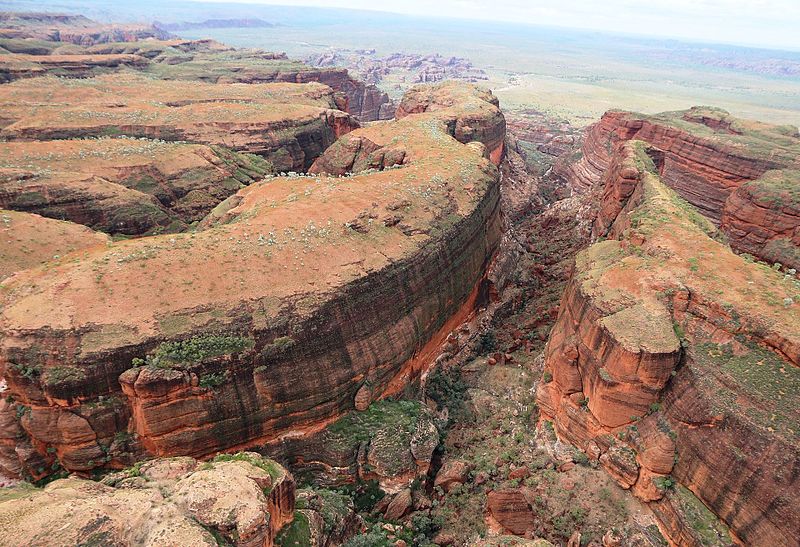
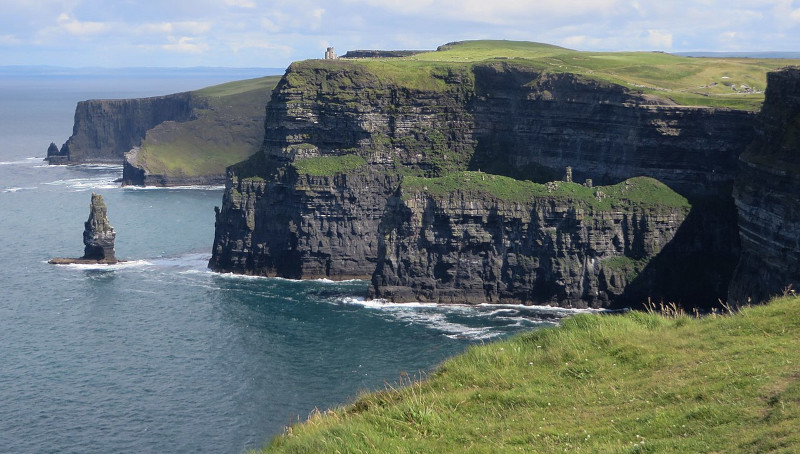
Cliffs of Moher Physical Description
The stunning Cliffs of Moher inspire a sense of awe and wonder in most of those fortunate enough to visit the amazing location. They do so, however, not only due to their incredible beauty. The site also boasts some highly impressive physical dimensions.
The remarkable construction of Nature is comprised of a series of beautiful sea cliffs. Yet, unlike most such structures around the world, this marvel extends for an incredible distance. In fact, it runs along the shoreline for a distance of approximately 9 mi (14.5 km).
Along their course, though, the cliffs vary in height, often dramatically. As a general principle, their vertical reach waxes and wanes throughout their stretch. At the southern tip, they measure about 390 ft (119 m). Around 5 mi (8 km) northwward they reach 702 ft (214 m).
The awesome Cliffs of Moher owe their generall dark color to their mineral composition. These world-renowned structures are primarily formed of a combination of limestone and shale. Adding to their aura, however, is the frequent presence of ancient fossils!
Other features further serve to enhance its enchanting appeal to the visitor. In addition to the geological composition itself, one also finds the remnants of burrows of unidentified ancient creatures, now preserved as casts, and preserved by the surrounding rocks.
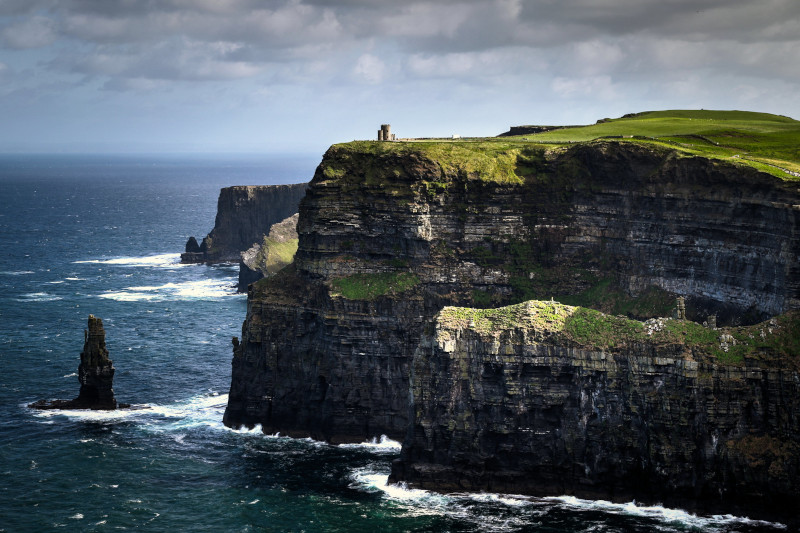
Cliffs of Moher Location, Formation, and Ecology
The fabulous Cliffs of Moher formed in a region of the globe already well known for its abundance of natural beauty and splendor. The precise setting for this location likely won’t surprise many people, however. That’s because the site’s officially a part of Europe.
More precisely, Nature created them on the southwestern coast of the country of Ireland. That further places them in the Burren region of County Clare. The closest settlement to the towering cliffs is the small village of Liscannor, at roughly 4 mi (6.4 km) distant.
To speak of the origins of these masterpieces of natural construction one must look to the very distant past. That’s true since their beginnings extend back to around 326 million years ago. That original process then continued until approximately 313 million years ago.
During this period, massive amounts of silt, clay, and sand were deposited by a river into a basin. Over the ensuing span of time, the weight of this build up compressed the lower layers, forming the observable strata. These also vary in thickness across its entire expanse.
The sheer beauty of the Cliffs of Moher draws the eye for yet another reason, as well. This holds true since, despite the seemingly inhospitable nature of the site, a surprising amount of life still appears here. That situation primarily holds true for flora, though.
During part of the year, tens of thousands of sea birds live on the cliffs themselves. These include 20 avian species. Above their heights, however, a variety of mamals call the setting home. Those creatures include such species as foxes, badgers, wild goats, and hares.
Features Sharing Its Region

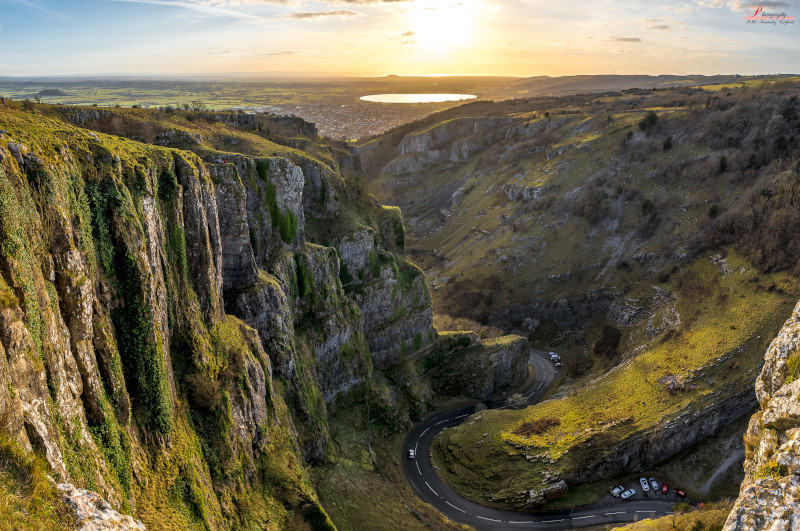
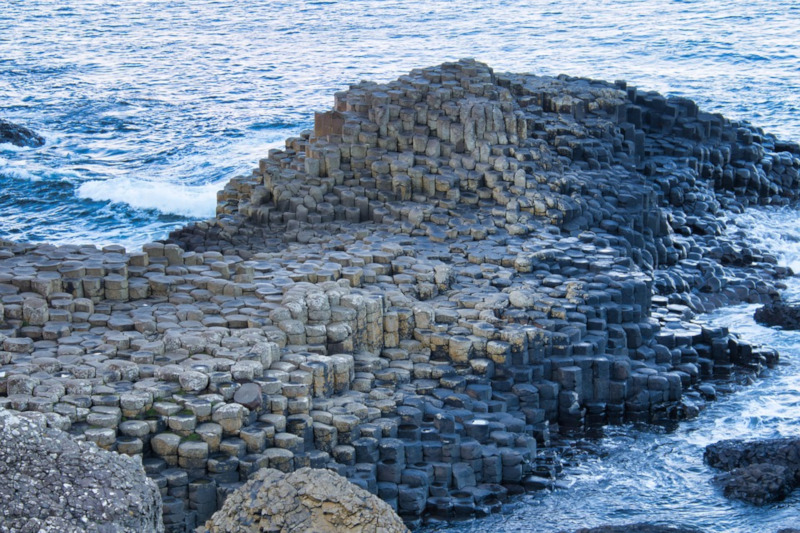
Check out our other articles on 4 Charming Christmas Season Species, Marbled Polecat, Komodo Island, Appalachian Avens, Great Potoo, Australian Painted Lady, Jamaican Iguana









Leave a Reply